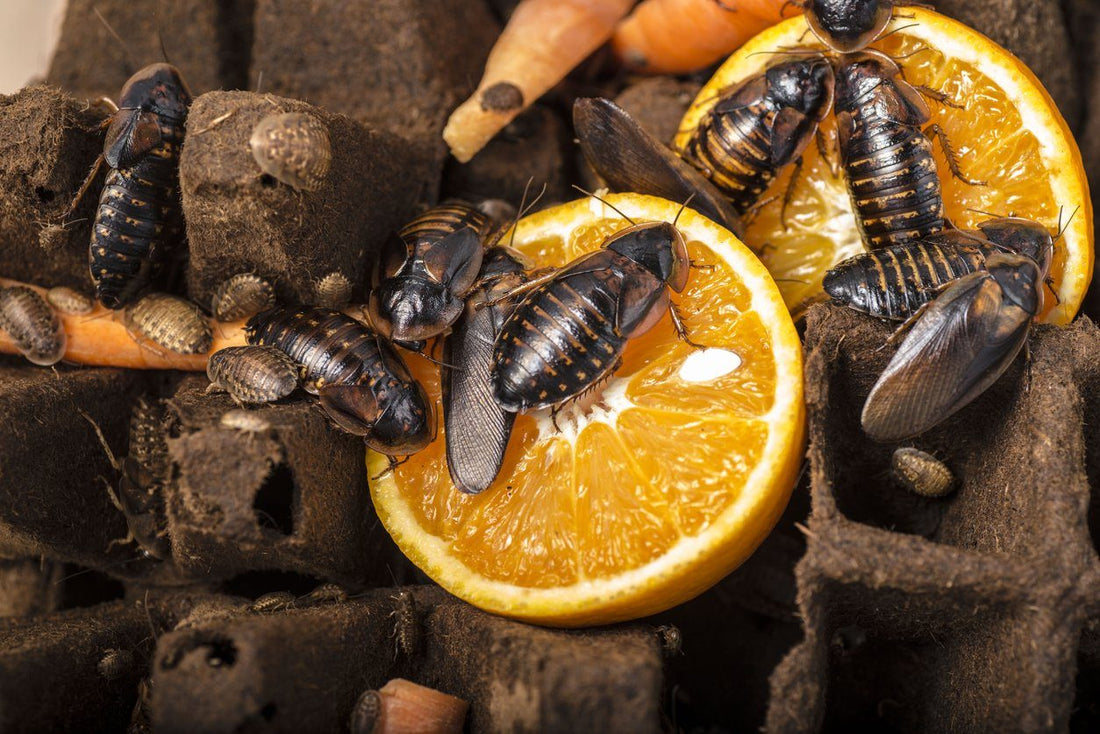Breeding your own feeder insects is a great way to save money, especially if you have an insectivorous pet that eats dozens of them every week! However, before you jump in and start your own colony, let’s talk about dubia roach allergies.
If you get hay fever in the spring, you know how annoying allergies can be. But allergies can also be hazardous to your health, and you’re not always simply born with them. Many people have reported developing an allergy to feeder insects after keeping and breeding them for a long period of time.
Here’s what you need to know about feeder insect allergies to make an informed decision.
Which Feeder Insects Cause Allergies?
In theory, frequent exposure to just about any type of feeder insect and their residue has the potential to cause a human to develop allergies. But here are some of the best-known feeder insect allergies:
Dubia Roaches and Other Cockroaches
Dubia roach allergies are the most well-known in the reptile hobby, but other types of cockroaches can cause allergies as well. Cockroaches are notorious for causing allergic reactions and asthma attacks in people who live in cockroach-infested houses. In fact, according to this paper, “cockroach allergy has been established as an important cause of asthma for over 50 years.”
Crickets
Before you decide to swear off dubia roaches forever and go back to crickets, here’s the harsh truth: crickets can cause allergies, too. According to this paper:
“Two employees developed allergic rhinitis and bronchial asthma which was occupationally related to raising crickets [as food for frogs]. Skin tests, bronchial challenge, radioallergosorbent test (RAST), in vitro histamine release and a passive transfer test supported the presence of type I hypersensitivity to cricket allergens. Skin tests of other employees and patients of an allergy clinic suggested that cricket emanations are potent allergens.”
Mealworms
Mealworms are also known to cause keepers to develop a mealworm allergy. Here is a quote from a publication by the Bat Conservation Trust:
“...people who work with insects such as mealworms can develop allergic reactions… [Keepers of animals who eat mealworms] are an at risk group from developing allergies to mealworms - specifically insect frass (waste) and scales. Microscopic fragments can become airborne through insect movement or through handling substrates and remain suspended in the room air. If these particles are inhaled they can stimulate an allergic response in some people.”
Superworms
There is less documented evidence of superworm allergy, but there are multiple reports can be found in online forums of allergy symptoms manifesting in reptile keepers after interaction with their superworm. Here is one such complaint from Chameleon Forums:
“Breathing in dust from the superworms (kept in oats) is causing me to have some super asthma attacks - tonights was one of the worst and almost sent me to the ER.”
How Do You Know if You’re Allergic to Your Feeder Insects?
Feeder insect allergies often take time to develop. But once they do, they can affect the eyes, nose, lungs, skin, or even cause headaches. Symptoms may also appear hours after exposure, which can make associating the symptoms with the cause a little difficult. Here is a general list of how you may be affected:
- Itchy eyes
- Watery eyes
- Red eyes
- Swollen eyelids
- Itchy nose
- Runny nose
- Sneezing
- Coughing
- Chest tightness
- Wheezing
- Difficulty breathing
- Itchy skin
- Cracked/dry skin
- Chapped skin
- Blisters
- Wheals
- Nettle rash
- Headaches
- Migraines
Severe allergic reactions, such as anaphylaxis, are also possible.
What Causes Dubia Roach Allergy?
People usually become allergic to a certain protein specific to the species of insect that they come in contact with frequently. This protein is present in frass (droppings), exoskeletons, and even saliva.
Allergies associated with dubia roaches and other feeder insects can also be related to something about their housing rather than an allergy to the insect itself. Common culprits include substrate, food, and mold. If you find yourself experiencing allergy-like symptoms around your colony, you may actually be allergic to the insects’ food/gutload or a type of mold that is growing in the colony. If you have a gluten allergy, you could be reacting to mealworm/superworm substrate if you use oats.
Tips for Allergy Prevention
If you have a feeder insect colony, you need to take special measures to protect yourself from developing an allergy to them. This means reducing your exposure to known hazards:
- Limit contact with your colony as much as possible
- Wear a mask and gloves whenever interacting with your colony
- Always wash your hands thoroughly with soap and water after interacting with your colony
- Do not rub your eyes or touch your face after interacting with your colony
- Store your colony in a room or area that is not regularly used
- Clean your colony and replace egg cartons/substrate regularly to reduce mold and waste buildup
- Clean your colony’s container in a well-ventilated area
Conclusion
People who smoke or have a pre-existing respiratory condition, autoimmune disease, or lots of allergies may be more likely to develop a reaction to feeder insects. That being said, it’s impossible to predict whether someone will eventually develop an allergy — which means that everyone should consider themselves vulnerable. Most allergies have fairly mild, if inconvenient, symptoms, but once an allergic response is established, there is potential for serious allergic reaction (ex: anaphylaxis) after the smallest exposure.
Ultimately, the decision of whether to breed your own feeder insects is up to you. There are ways to minimize the risk of developing a dubia roach allergy or becoming allergic to another type of feeder insect, but there’s no guarantees.
Whether you want to start your own colony or would prefer to play it safe and let us handle the hazards, get all the feeder insects you need at DubiaRoaches.com!











